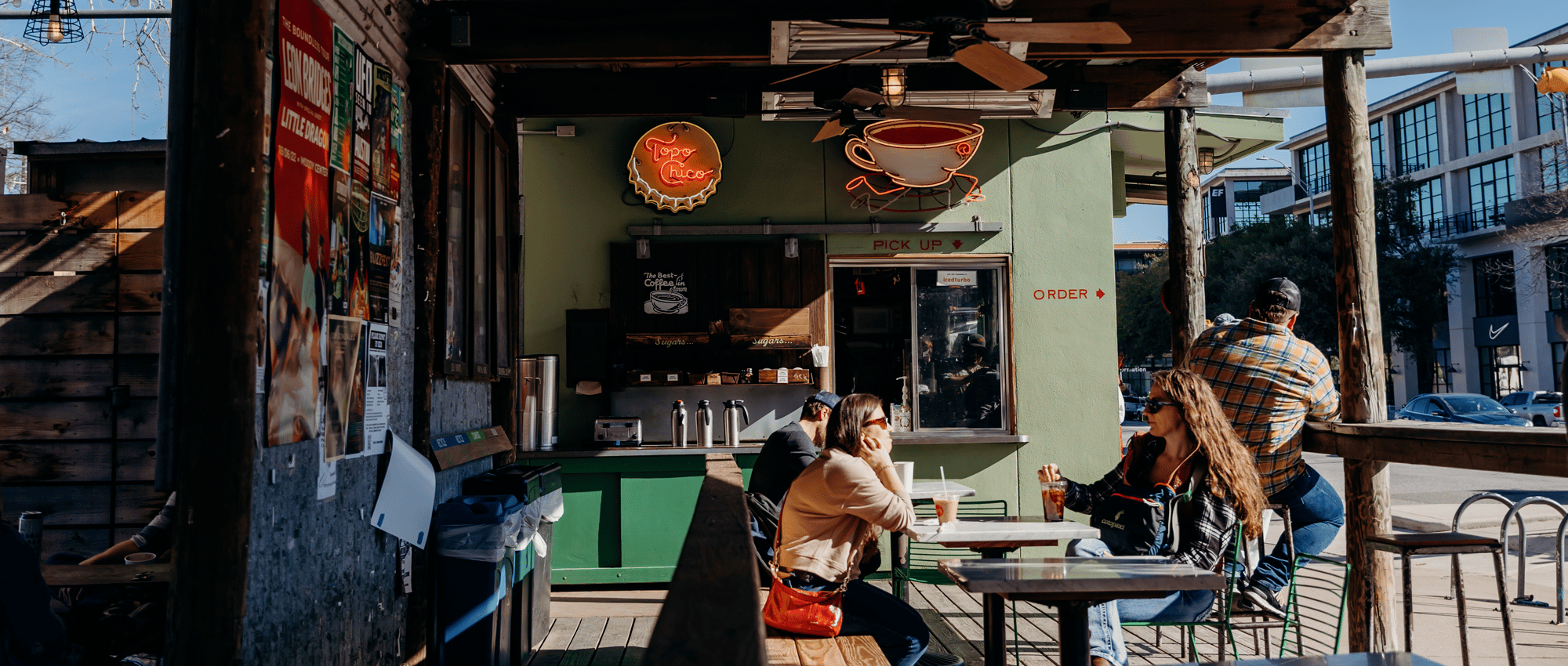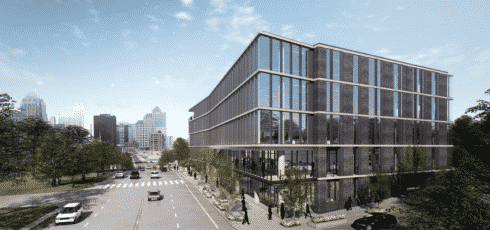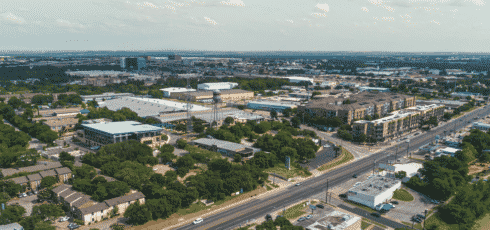At AQUILA we love to tout Austin’s accolades and have published many articles about why Austin is such a great city and great for businesses. However, with any growing city, comes growing pains and community challenges. Austin recently fell from the top 10 cities in Newsweek’s top U.S. city rankings and is now sitting at No. 13. In light of this, we decided to further explore some of Austin’s challenges.
In early 2020, just before the beginning of COVID-19 closures, we published our article 4 Biggest Challenges Austin Will Face in the Next Decade. While we couldn’t predict the impending pandemic, we did hit a few nails on the head and we plan to expand on some similar issues in this article.
Of course, all of Austin’s challenges can’t be explored in one article, so we will focus on a few of the significant obstacles including Austin’s:
- Cost of living
- Infrastructure
- Weather
- Population growth
Austin Cost of Living
Anyone who has recently tried to rent an apartment or buy a house in Austin knows that the city is no longer the low-cost home for artists and musicians that it once was. While Austin’s transition to a tech hub has been great in many ways, the high-salary, big-spending environment it created has led Austin to become unaffordable for many.
Austin’s housing market is one of the best examples of the city’s growing affordability issues. The median price for a house in Austin was $496,039 in August 2022, up 5% from the year prior. Assuming someone secures a 30-year mortgage and is able to provide a 20% down payment ($99,207, not an insignificant amount), a home at this price could cost roughly $2,700 per month in mortgage payments alone at current interest rates (which are going up). If a more realistic 10% ($49,603) down payment is used, that number increases to just over $3,000 per month, not including property taxes (which are getting higher), utilities, or maintenance.
According to Zillow’s Affordability Calculator, a household would need an annual income of roughly $110,000 and no additional debts to afford a home in Austin at the current median price. The problem is, Austin’s median household income is just under $80,000 per year. With car payments, grocery bills, school supplies, and medical expenses also taking their share of the average person’s wallet, the possibility of owning a home in Austin is simply out of reach for a significant portion of the population. Of course, there’s always renting, but with rent averaging over $1,800 per month, that’s not exactly an affordable option either.
Unfortunately, Austin’s struggle with affordable housing has also exacerbated the city’s struggle with homelessness. Calls regarding homeless encampments have increased significantly in 2022 compared to 2021, and there is still no clear path forward for the city to adequately address the issue. A 2020 report estimated there were roughly 10,000 people experiencing homelessness in Travis County or about 1% of the county’s population.
Austin will hopefully be able to move beyond these growing pains and adequately address the issues surrounding its cost of living, but it’s definitely a challenge many Austinites have to contend with today.
Austin Infrastructure
As with most cities experiencing growth in a relatively short amount of time, Austin’s infrastructure has had a difficult time keeping up with demand.
Hop on Mopac or IH-35 at 5 p.m. on a weekday and you’ll quickly see Austin has a bit of a traffic problem. It’s not abnormal for a five-mile trip to take half an hour or more, and going through Downtown Austin at rush hour should be avoided at all costs. Austin’s public transportation system is also not robust enough to adequately replace the average Austinite’s commute, and the city’s size and distribution doesn’t lend itself to being walkable in many areas. Officials are taking several steps to address these issues, including Project Connect and the Austin Strategic Mobility Plan, but those solutions will take time to implement.
Austin’s utility services have also faced issues in recent history that further highlighted infrastructure challenges. Though not a disaster specific to Austin, the failure of ERCOT’s power grid in early 2021 highlighted the vulnerabilities of Austin’s electricity, raising concerns that a similar disaster outside of Austin’s control could happen again. Austin has also issued several boil water notices for residents in recent years that, although more of an inconvenience than a disaster, isn’t ideal for a city once ranked as the best city to live in the United States.
Austin’s positive attributes continue to outweigh the negative, but as the city continues to grow these infrastructure issues will become harder to overlook.
Austin Weather
Yes, Austin really is that hot. And cold. And rainy. And everything else. If weather extremes aren’t your forte, Austin probably isn’t the city for you.
Austin summers can be painfully hot, regularly going days or weeks with temperatures reaching over 100 degrees (the summer of 2022 was the second-hottest on record). Nights can also hover around the 80-degree mark and be impressively humid sometimes, so don’t expect much relief from the heat during your night on the town. Lunch on the patio in August might sound like a good idea, but real Austinites go for the air conditioning.
At the other end of the year, an Austin winter can be bitterly cold. Though cities further north have us beat on snowfall and low-temperature records, you’ll have a tough time finding anyone saying Austin is comfortably warm in December. Austin is also in the ideal location to see snow regularly enough to cause problems but not regularly enough to be prepared for it, so don’t be surprised when two inches of snow brings the city to a standstill. You’ll also be able to welcome the New Year with cedar fever, which is always fun.
All jokes aside, Austin’s weather isn’t all that bad depending on your perspective. It’s good enough that golfers can play their favorite sport for the majority of the year, and even on the hottest days of summer Austinites can still beat the heat at Barton Springs or any of Austin’s pools. For people moving from California, the weather might be terrible, but transplants from the midwest or northeast would likely argue Austin’s weather is pretty great.
Austin Population Growth
Austin’s rapid and consistent population growth has brought numerous benefits to the city as a whole, ranging from jobs and money to restaurants and entertainment. The Austin MSA grew 33% between 2010 and 2020 on top of the 37% it grew between 2000 and 2010. Now with over 2 million residents calling the Austin MSA home, there are more Austinites than ever before.
However, there are some drawbacks to this population growth.
The days of going out for dinner on a whim are quickly coming to a close in Austin, especially for the more popular restaurants in town. Having to make a reservation is becoming the new normal, with some restaurants taking reservations months in advance. If you didn’t plan ahead, you might want to just cook a meal at home.
The same also applies to the local events that we all know and love. Austin traditions like South by Southwest and Austin City Limits have always drawn big crowds, but Austin’s growing popularity has noticeably increased the cost and difficulty of attending. More money and bigger crowds are becoming the norm for many of Austin’s biggest events and venues.
For those wanting to get away from the crowds, Austin’s 300-plus parks spread across 17,000 acres have historically provided a peaceful getaway from the stresses of city life. However, with the number of people competing for space in these green areas today, many of Austin’s most popular parks can look more like Central Park than an escape into nature. Many natural areas within a few hour’s drive of Austin have also become increasingly crowded, leading popular destinations like Enchanted Rock to start requiring reservations and a float trip down the Comal River in New Braunfels to be more akin to bumper cars.
To get the most out of Austin, it’s best to plan ahead and be prepared to share, something new for older Austinites to experience.
Conclusion
The City of Austin continues to make improvements to help Austin get through its growing pains. But, with no signs of growth slowing, we will likely see more challenges and hopefully, more solutions. Even with these challenges and drawbacks, you may be thinking like us, we still can’t get enough of Austin and all it has to offer.












